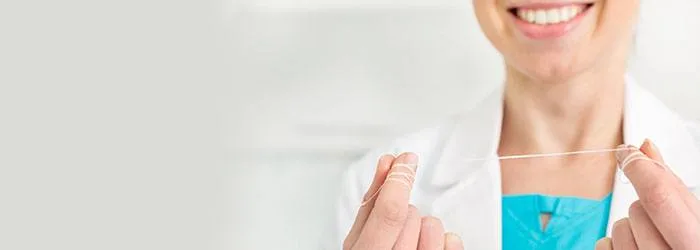Flossing is a crucial component of your daily oral care routine. Learn how to use dental floss the proper way, how often to use dental floss, and more.
How to use Dental Floss for your teeth?
Because you’ll be putting your fingers into your mouth, be sure to wash your hands before you reach for the floss. Then just follow these steps on how to use dental floss correctly:
Use enough floss (Wind). Break off a piece about 45 cm (18 inches) long. That sounds like a lot, but you want enough to keep a clean segment in place as you move from tooth to tooth. Wrap most of the floss around either the middle finger or the index finger of one hand, whichever you prefer, and a small amount onto the middle or index finger of the other hand. (Using the middle finger leaves your index finger free to manipulate the floss.)
Guide: Keep a one-to-two-inch length of floss taut between fingers. Use index fingers to guide floss between contacts of the lower teeth.
Slide between teeth Gently slide the floss between the teeth in a zigzag motion and be careful not to let the floss snap or “pop” between teeth. Contour floss around the side of each tooth. Slide floss up and down against the tooth surface and gently under the gum line. Floss each tooth thoroughly with a clean section of floss.
Form a “C”. Make a C shape with the floss as you wrap it around the tooth. Then carefully pull the floss upward from the gum line to the top of the tooth.
Roll along. As you move from one tooth to the next, unroll a fresh section of floss from the finger of one hand while rolling the used floss onto the finger of the other hand. Use your thumb as a guide.
Reach both sides. Don’t forget to floss the back side of each tooth.
This technique applies to any type of floss you use including waxed, unwaxed, spongy floss or dental tape.
It doesn’t matter whether you start with your upper or lower teeth, or whether you start in the front or the back. Just make sure that you floss all your teeth, including the back side of the very last tooth on the left, right, top and bottom of your mouth.
And don’t forget to floss under the gumline and along the sides of teeth that border any spaces where teeth are missing—food particles can become trapped in these spaces, too.
Flossing Back Teeth
As everyone who brushes and flosses their teeth knows, your back teeth are harder to reach and to keep clean than your front teeth.
Here’s how to floss your back teeth:
Unwind the floss. Once it’s time to reach your back teeth, a slightly longer string of floss can help make it easier.
The back teeth are designed with grooves and ridges that help you to chew food, but the down side is that these grooves and ridges can also collect tiny food particles, which can increase the risk of cavities and bacteria in plaque, which in turn can lead to gum disease.
Floss Gently
Poor flossing technique can result in complications, and it's important to be thorough yet gentle, especially when flossing with an electric flosser. Be sure you understand how to use it.
You can always ask your dentist or dental hygienist to show you how to use dental floss correctly if you are uncertain.
As long as you use the correct technique, the type of floss you use is a matter of personal preference. There are many types to choose from, and you can even choose a variety of types to meet your needs and those of your family members. Either way, using the correct technique will help you remove the excess food particles and plaque build-up between your teeth and help improve your oral health.
How Often to Use Dental Floss
How often to use dental floss is just as important as properly using it. It is recommended that you floss at least once a day to effectively remove trapped plaque, food, and debris form between teeth.
